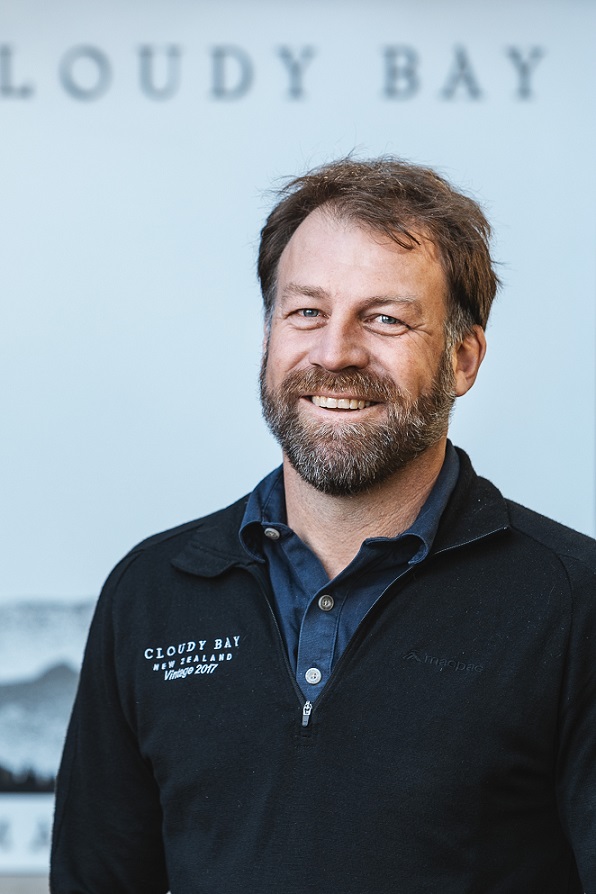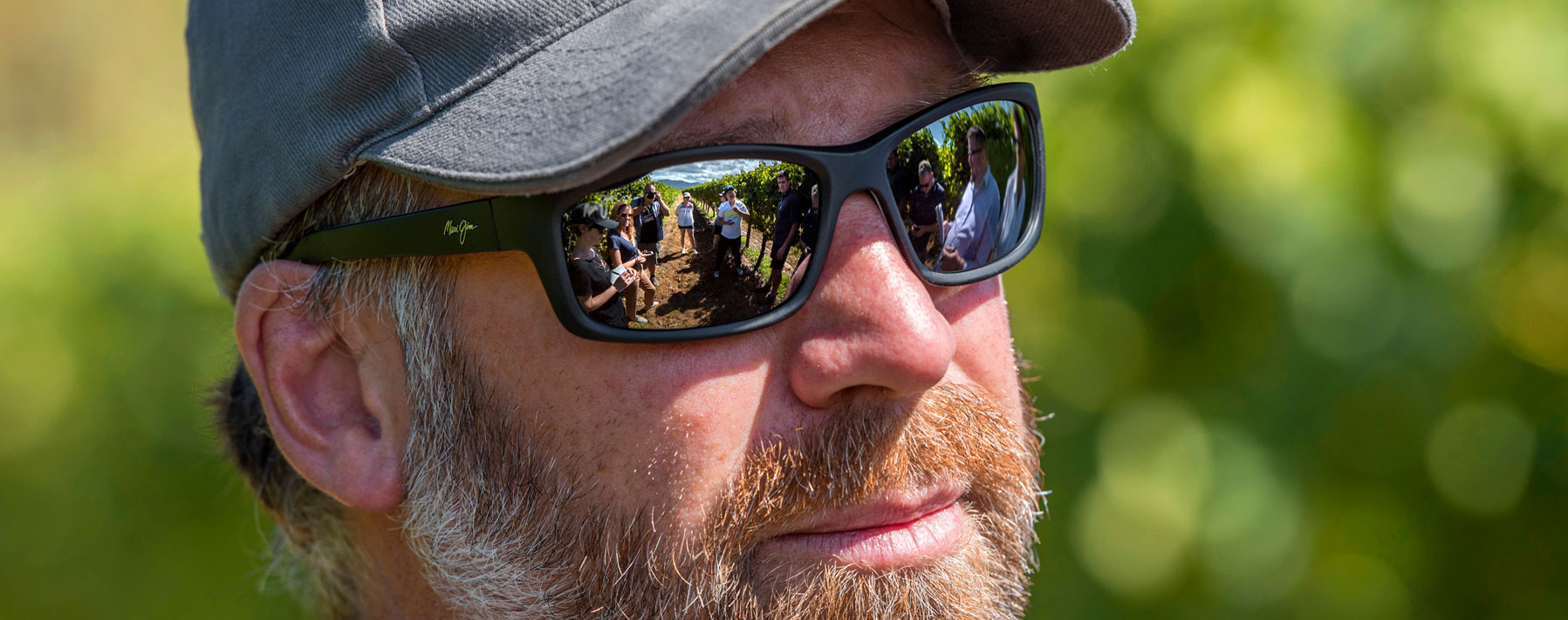Pouring the 2020 vintage for me, Cloudy Bay’s technical director Jim White commented on the variety: “It’s so malleable in where you want to take the style… I think one of the key things is knowing quite clearly the wine you’re trying to produce in the first place. You’ve got a lot of levers to pull with Chardonnay and ultimately we’re trying to respect the fruit and add some definition, make a wine that’s got that lovely citrus-driven stone fruit aromatic and introducing that savoury spice characteristic with malolactic fermentation and oak.
“On the palate we want a wine that’s got drive and direction in its youth but building some complexity and weight – allowing it to grow in time and to really build that palate rather than make it big and rich and opulent in its youth. That’s never been the Cloudy Bay style and it wouldn’t sit consistently with all our other wines that always have a mouth-watering freshness and acid-drive that are the real hallmark of all the Cloudy Bay wines.”
The Australian, who joined Cloudy Bay as a viticulturist in late 2010 before becoming technical director in 2018, believes this wine will still taste great in eight to ten years’ time.
'It’s very easy for the winemaker to put their big stamp and their handprint on the Chardonnay'

- Half the grapes come from the same gravelly soils of the Wairau Valley as Cloudy Bay’s Sauvignon Blanc and the other half come from the cooler clay soils of the Southern Valleys. About 60% of the grapes are from Cloudy Bay’s own vineyards and 40% are supplied by growers. Most are the Mendoza clone, which is known for its capacity to produce premium, full-bodied, textural wines when barrel-fermented. Jim says this clone is prone to “hen and chicken” but is incredibly consistent from year to year.
- Typically, Cloudy Bay makes around 35 batches of Chardonnay each year. These are all individual vineyard parcels harvested, pressed and vinified separately. Batches can be as small as 10 barriques, or up to 60-80 for some of the larger parcels from the Mustang vineyard.
- Yields are around 6-7 T/ha maximum.
- The grapes are hand-harvested over a spectrum of ripeness but the golden numbers are 23-23.5 Brix, pH around 3.05-3.1 and TA of 9-10g/L.
- The winemaking is relatively straightforward, Jim insists. “The key, as with all our wines, is to have really good quality fruit and to respect that fruit through the winemaking process. And don’t overpower it. It’s very easy for the winemaker to put their big stamp and their handprint on the Chardonnay and we try to make sure it’s a subtle hand that will allow the vineyards to speak and the region to speak through the wines.”
- The grapes are whole-bunch pressed into stainless-steel tanks to “take the really heavy solids out”.
- They put “a homogenised cloudy juice” to barrels (18% new) or to oak cuves of 6,000L capacity, making sure the “dirty juice” (about 250-300 NTU) is spread evenly across the batch. “We like to have a consistent range across the batch rather than have some clean juice and some really dirty juice in different barrels,” Jim explains.
- Indigenous yeasts are used to start the ferment, overseeded with a pied de cuve about halfway through (at about 12 Brix) “because we just want to see those wines get to dryness”.
- One or two barrels undergo a “flowers ferment”. “We go and collect a whole lot of flowers from the vineyard – they could be dandelions or anything – and we get a bag with some grapes and we squash it down in a vacuum-sealed bag and then we put it on a warm plate and the yeast from the flowers and vineyard start to inoculate and the bag blows up, and essentially you’ve got a pied de cuve of a whole lot of yeasts that have come from the vineyard. Then we pitch that into the ferments. It’s an interesting idea someone came to the table with.”
- Unlike the Cloudy Bay Sauvignon Blanc, Jim says “it is rare that we would inoculate a Chardonnay batch… The inoculated batches are typically very fruity and simple in style and don’t have the complexity and texture we require to make the Cloudy Bay blend.”
- The fermentation usually finishes in late April or early May.
- On a weekly basis after that, they check the health and taste of all the wines in the batches and decide if they should go through malo or be sulphured and topped up. “We’re looking at the general balance of acidity versus the weight of the wine,” Jim comments. 78% of the wine underwent malolactic conversion in 2020, a vintage with relatively high levels of malic acid (4-5g/L).
- Some of the barrels are inoculated for MLF and some take off naturally. “We find, because of the high levels of acidity and the low pH, it’s a difficult wine to get through malolactic fermentation naturally. We’re starting to think about co-inoculation during the end of primary fermentation, using some of that warmth of the barrel that’s ticking away at 22°C.” This is a technique they have picked up from the winemakers who come for the harvest from sister brands Moët et Chandon and Veuve Cliquot and have suggested using the same malolactic bacteria that they use for their Champagne base wines.
- The lees get stirred regularly for the first three months until the wine is sulphured and topped up (fortnightly). “We’re quite particular about that” because they “don’t want to tire out the wines,” Jim says. They want to let them “grow in barrel at a relatively slow rate”.
- After 10 months on gross lees the wines are blended.
- “We don’t want too long in barrel,” Jim explains. “We’re really looking for oak that’s going to stretch out the palate, that’s going to bring a bit of spice, a bit of savoury complexity, not to bring char and smoke or any sort of overt oak characteristics.”
- Despite having so many batches and barrels, Jim says the blending process is relatively simple. They ask: “Is it in or out? Is it in style and is it of sufficient quality? Occasionally you’ll have the outliers that are out of style so it gets rated poorly but then someone rates it really highly because it will be an interesting blending component to assess right at the end.”
- Six or seven of the team go through the wines and rate them out of 5 with 1 being perfect and 5 being faulty. From the lowest scorers they make the core blend. Then they add in the outliers (those that some of the team scored 1 or 2 while others marked as 4 for not being in style) to see what they add to the blend.
- Jim says they aren’t under any pressure to add barrels to boost volume as they harvest 15-20% more grapes than they need.
- The wines are out of barrel by late January, and before the next harvest. “We park it up in a tank with some fine lees,” Jim says.
- Then it is bottled with 30mg/L of free SO2 the following June or July, 14-15 months after the vintage.

Once they have agreed the blend, they then go through a forensic analysis of the wines that didn’t make it to see what they can learn.
The future could be concrete
In the future they are looking to ferment some of their Chardonnay in concrete tanks in the newly renovated Founders cellar (the original Cloudy Bay winery building). Wine tourists will be able to see the 16 oak cuves in the foreground and an array of tulip-shaped concrete tanks of 6,000L capacity at the rear. One is in place, another five have been ordered from the French manufacturer, and there is space for a further six (when the budget allows).The concrete will add to “the palette of colours”, Jim says.
The best Chardonnays from IWC 2022.













.png)






